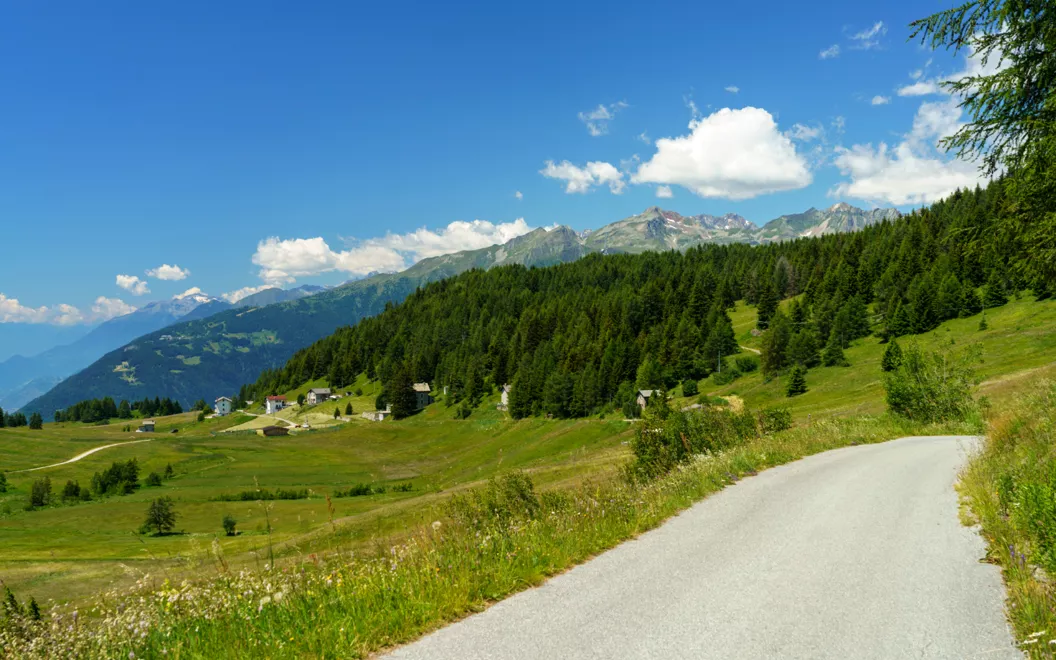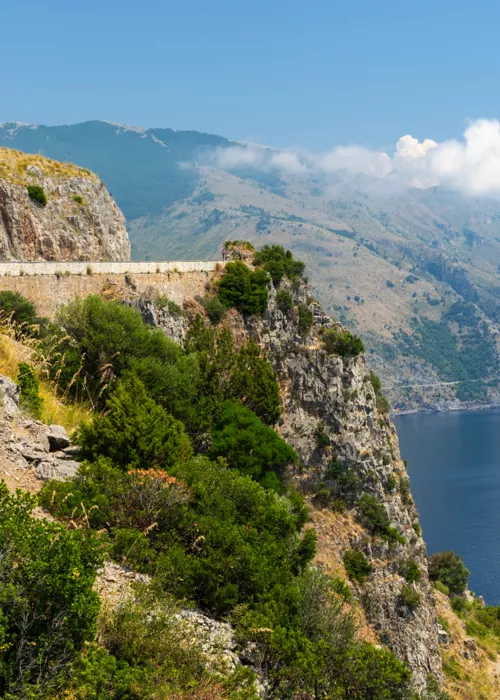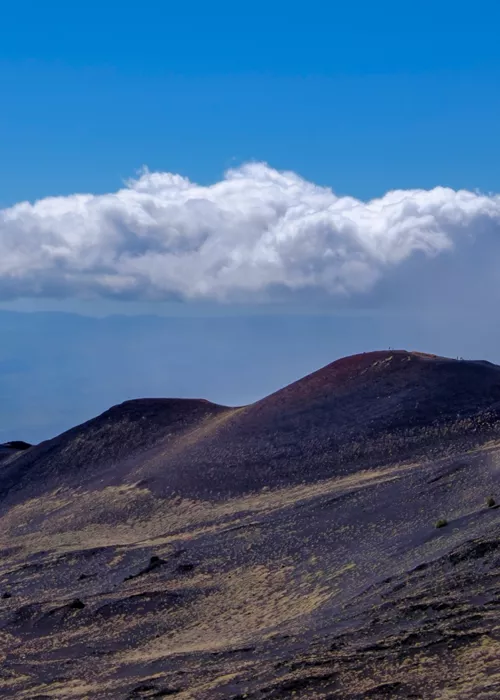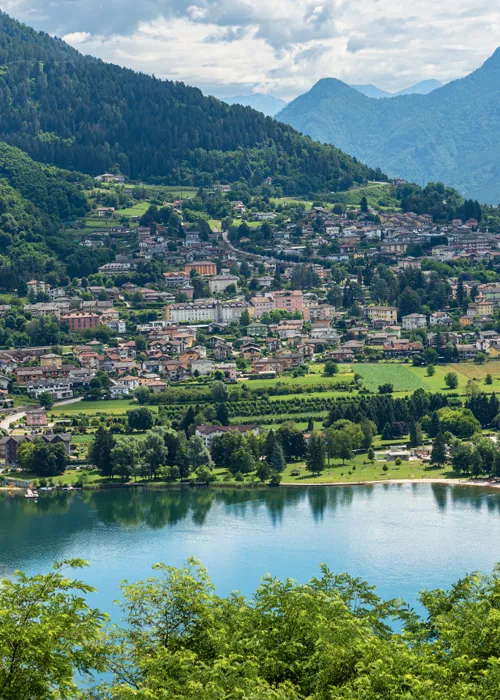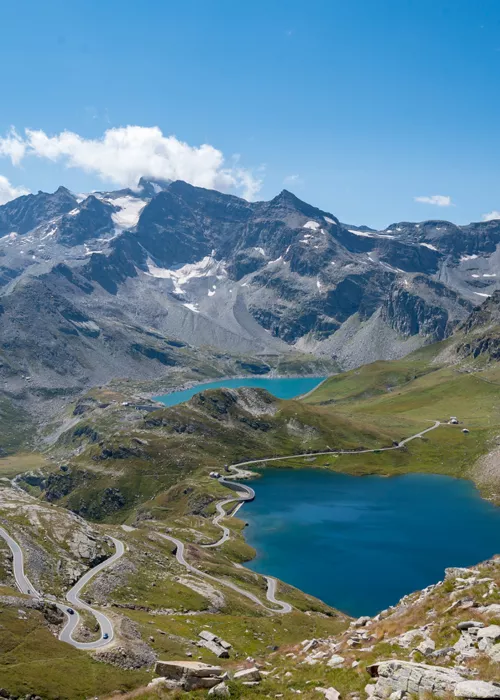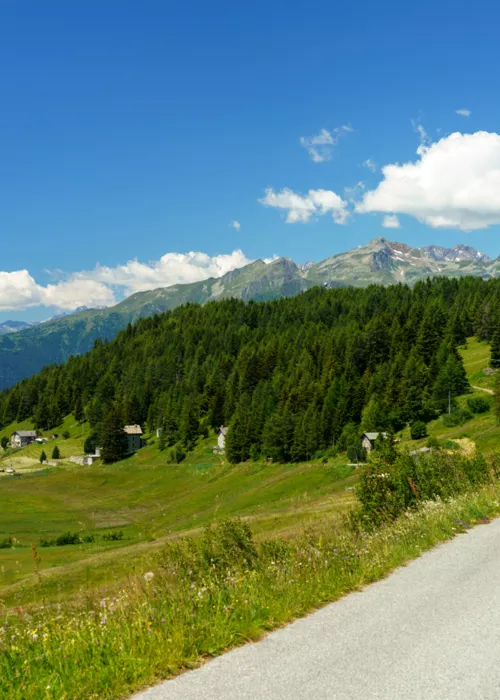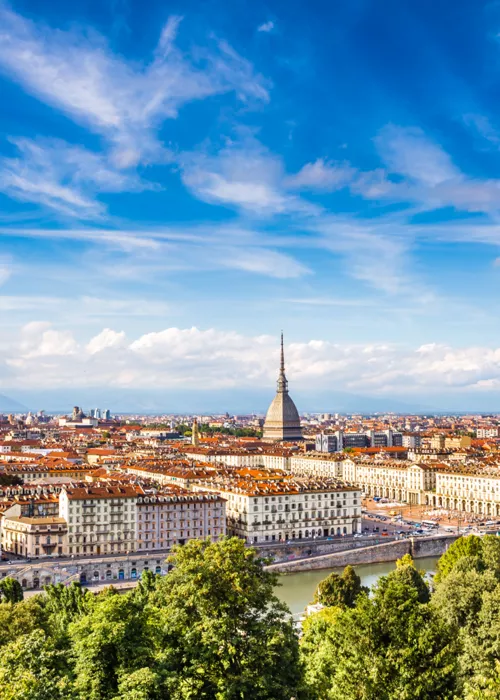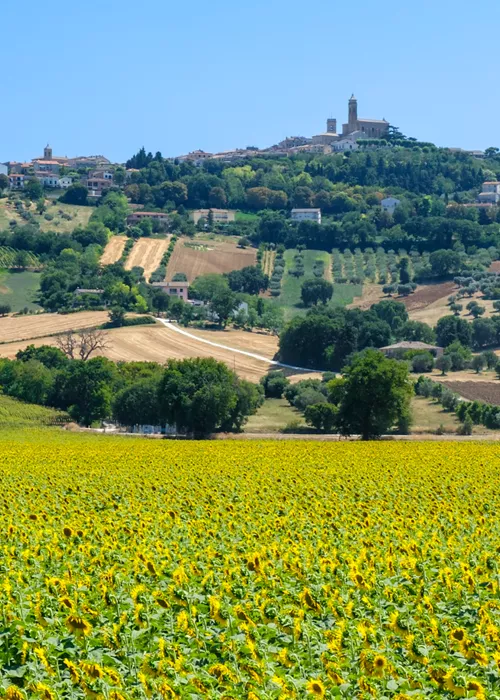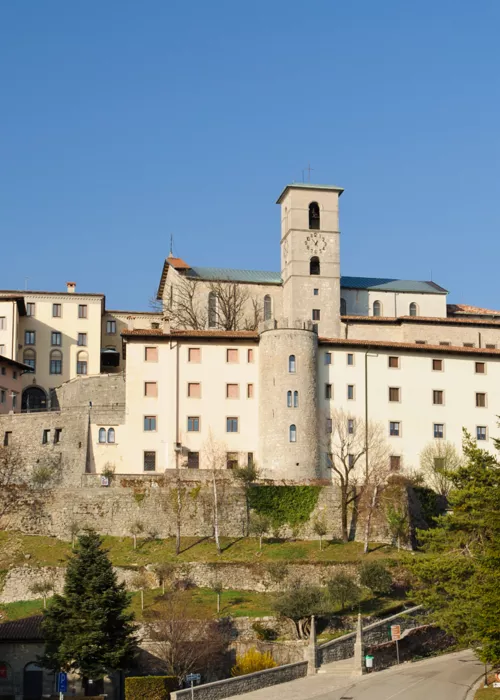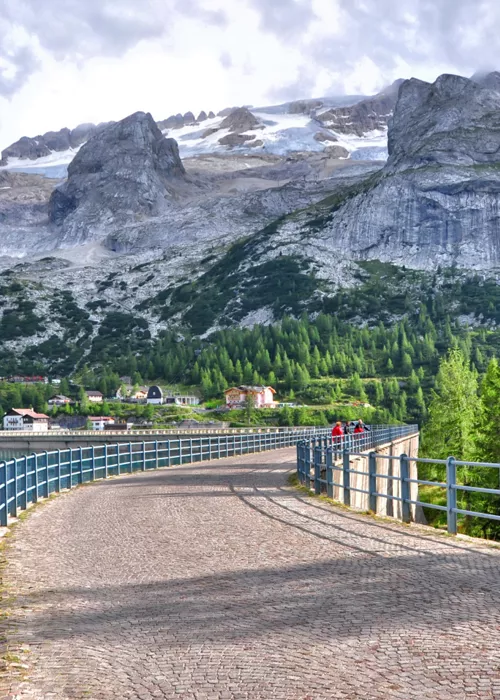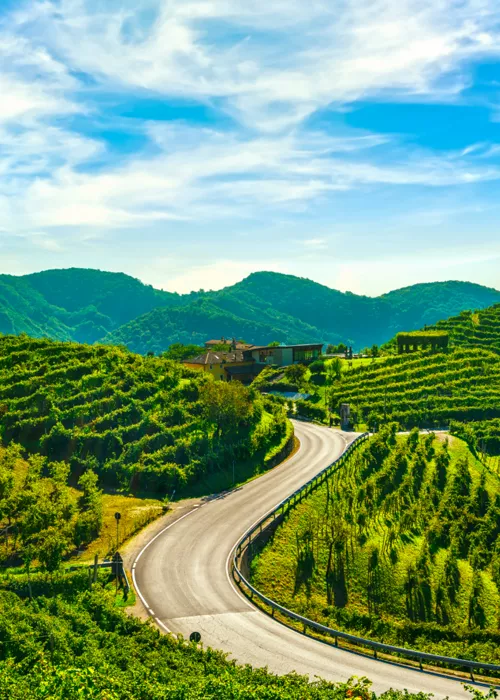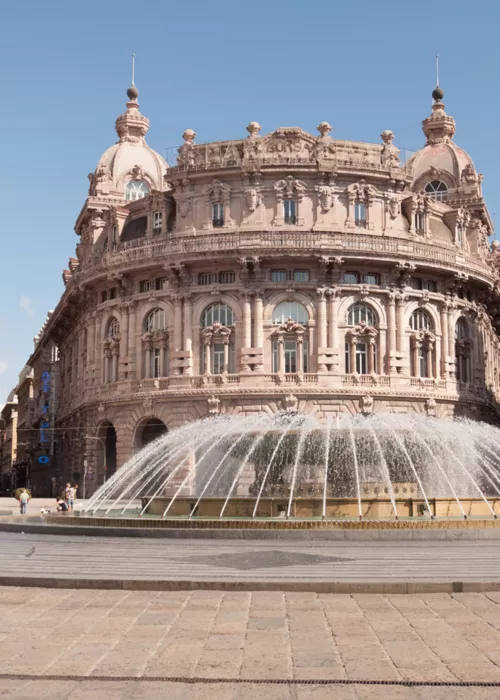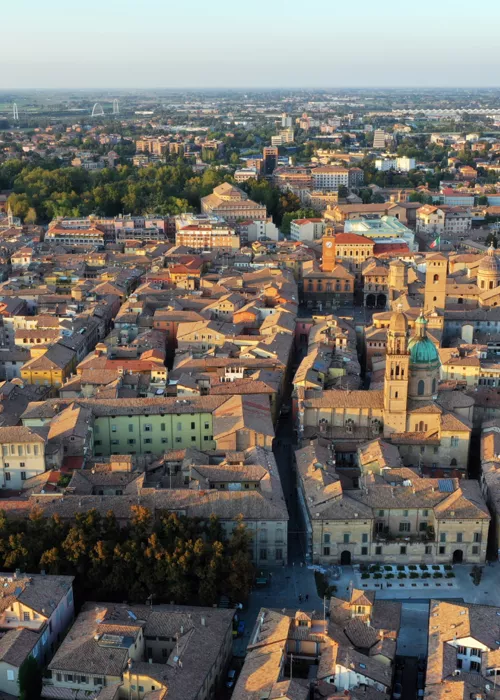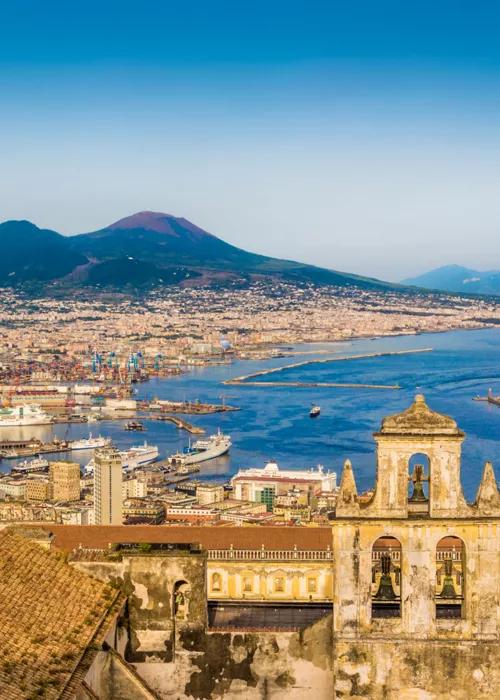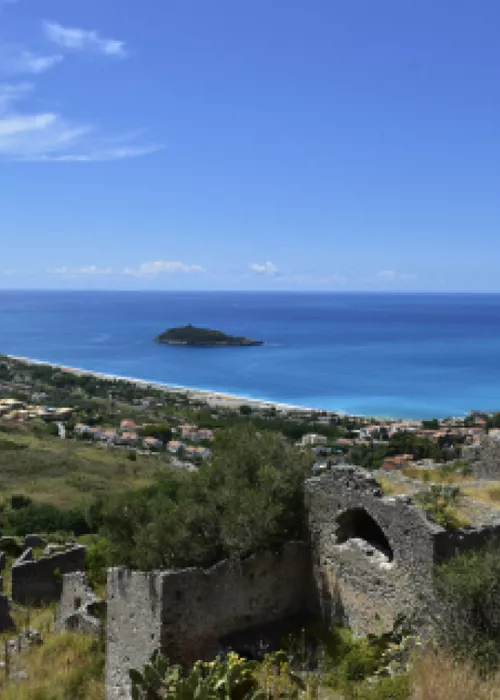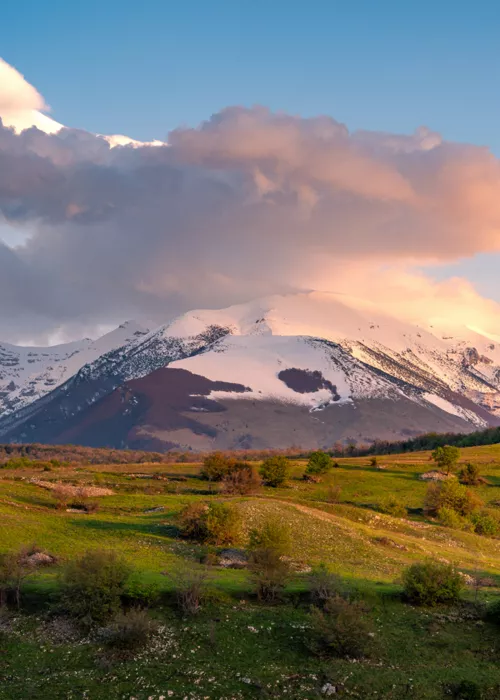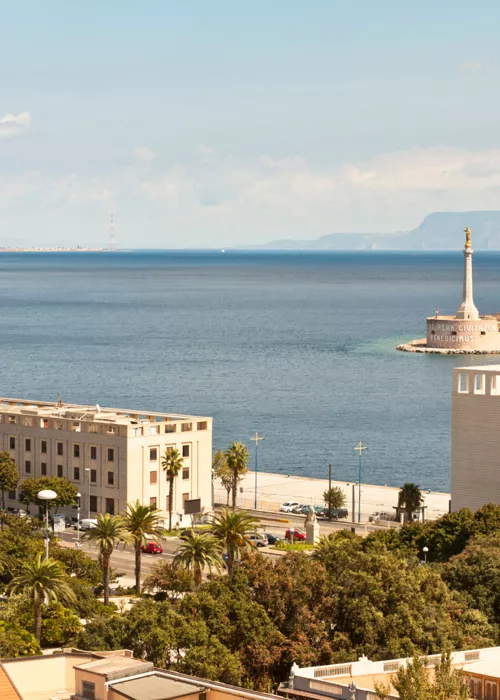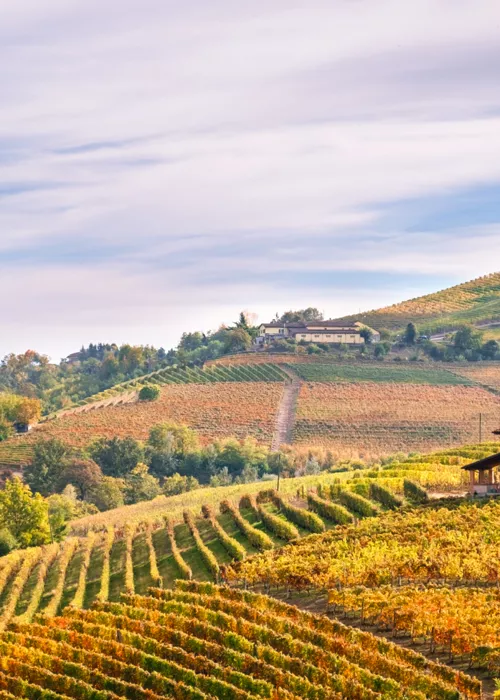In Isernia: a dive into history

The start is from the capital city of Molise, where signs of the past are still visible. What is now the Piazza del Mercato (Market Square) was once the Roman Forum; the Cathedral of St. Peter the Apostle, dating to the Middle Ages, was built on the remains of a pagan temple from the 3rd century B.C.; the aqueduct, dug into the travertine rocks in the subsoil, still works. But the symbol of Isernia is another landmark: the Fontana Fraterna, made of limestone in 1835 as a tribute to Pope Celestine V.
It looks like a loggia crossed by 6 jets of water. You can fill up your water bottles here and who knows, maybe it will give you an extra boost. You will need it to negotiate the first section of this itinerary, which is anything but easy. The route climbs up to the Macerone pass, a 3.5km slope with an average gradient of 7.4 percent. If you are tempted to get off the saddle, be aware that someone else has done it before you. We are talking about the legendary Costante Girardengo, who at the 1921 Giro d’Italia arrived at the top with quite an effort, drew a cross on the dust and stammered: “Girardengo stops here”.
Inland: in contact with the wildlife

Along the route of the 9th stage of the Giro d’Italia 2022 another ascent awaits you up to Rionero Sannitico, at 1,032 metres above sea level. At the summit, having climbed up 9 tough kilometres with an average gradient of 6.7 percent, you are facing the upper Volturno valley on the border with Abruzzo. But you cannot go straight ahead. You are on the edge of a little-known terrestrial paradise: the Pantano della Zittola, one of the largest peat bogs in the Apennines, fed by about 25 natural springs. This is a marshy area with foxes, wild boar, fallow deer and horses: a sort of Wild West where animals rule, but within reach of a bike. After the climb to Roccaraso, a famous tourist resort in the Altipiani Maggiori area, the route becomes a little less testing: for 90 kilometres it rolls into a hilly Abruzzo, passing through the pretty village of Filetto and then Roccamontepiano, on the slopes of the Majella.
Up the Majella: an iconic ascent

The final part of this route is just for a few cyclists. Past the climb to Lanciano Pass – a sort of terrace where, in winter, you can ski while gazing at the sea – a long descent (with rather steep slopes) takes you to Scafa, near the Lake Alanno-Piano d’Orta Oasis. Take it easy even when you reach Roccamorice, a few kilometres further on, for a stop at the ancient mineral deposits or for a few panoramic photos. At this point, you face the climb to Mount Blockhaus. An epic feat; just take a look at the stats. From Roccamorice the ascent is 13.6 kilometres long, with 1,141 metres of elevation gain and an average gradient of 8.4 percent. But the last 10 kilometres have an average gradient of 9.4 percent with peaks up to 14 percent. It might comfort you to know that on these roads Eddy Merckx won his first Giro victory in 1967. Once on the summit, you will be surrounded not only by a wondrous panorama but also by the ghosts of the brigands who, hunted by the Savoy army, found refuge among these peaks.

